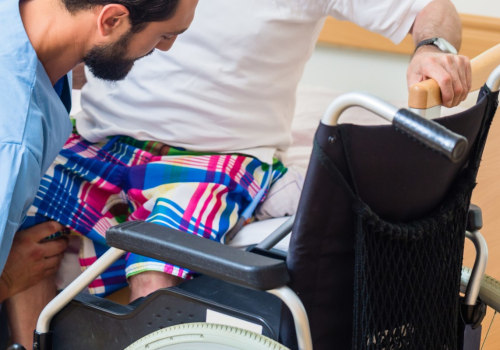Those who enter from home are more likely to die within six months and those who enter nursing homes are less likely. What people need to understand is that people stay in palliative care for a significant amount of time. In fact, about 12 to 15% of patients tend to live six months or more, while 50% pass in three weeks. Patients younger than 65 are more likely to survive longer, while those admitted to hospice care directly after an extended hospital stay are 95% likely to pass within six months.
While most patients die very soon after hospice enrollment, there is a small minority of patients who have prolonged survival. These patients can live 6 months or more and create pressure for hospices to prepare patients and their families for possible discharge if they no longer meet the eligibility criteria. This study provides three main outcomes that hospices and referring physicians could use to guide the care of hospice patients who may have an extended prognosis. Third, confidence intervals of 95% of the predicted mortality rates at 6 months included probabilities greater than 50%.
That is, even among groups with low 6-month mortality rates, there is a possibility that a patient will die within 6 months. Therefore, caution should be exercised when interpreting these data and these results should not be used to exclude patients or groups from hospice care. There are three limitations of this study that should be taken into account:. First, this study was conducted in just 10 non-profit hospices.
Therefore, the results reported here may not be generalizable to the national population of hospice patients. However, the 6-month mortality rate in this sample was similar to that reported nationally, providing confidence that these findings may be similar in other hospice programs. It is a form of medical care that aims to relieve pain and symptoms associated with terminal illnesses in order to improve the quality of life of patients in their last months and weeks of life. In general, hospice care is provided to patients with a life expectancy of less than six months.
Patients do not live longer or shorter lives in hospice, but make the most of the time remaining by ensuring they receive the best care possible. Palliative medicine is a medical subspecialty provided by doctors who offer palliative care to people who are seriously ill. Palliative care alleviates suffering and improves the quality of life of people of any age and at any stage of a serious illness, whether the disease is curable, chronic or life-threatening. Palliative care is comprehensive care that relieves the symptoms of a disease or disorder, whether they can be cured or not.
Hospice is a specific type of palliative care for people who are likely to have 6 months to live or less. In other words, hospice care is always palliative, but not all palliative care is hospice care. Palliative care is provided by an interdisciplinary team that may include a doctor who specializes in palliative medicine, a nurse, a pharmacist, a social worker, a dietitian, and volunteers. Other doctors focus on your overall health or treating your illness or condition.
Palliative doctors focus on preventing and alleviating suffering, improving your quality of life, and helping you and your loved ones cope with the stress and burden of your illness. But palliative physicians have special training and experience in pain management and symptom management, and they specialize in helping patients and their families cope with the many burdens of a serious illness, from the side effects of medical treatment to caregiver stress and fears about future. Palliative doctors can help you with difficult medical decisions, helping you weigh the pros and cons of various treatments. Your palliative doctor coordinates care with your other doctors and helps you navigate the often complex health care system.
Insurers and Medicaid agencies will provide coverage for hospice care if your doctors determine that you are likely to have 6 months (in some cases, a year) or less to live if your illness runs its normal course. However, it is your own decision to enter or leave hospice care. If your condition improves or if you want to seek curative treatment, you can leave hospice care and return if and when you want to. You are eligible for hospice care if you are likely to have 6 months to live or less (some insurers or state Medicaid agencies cover hospice for a full year).
Unfortunately, most people don't get palliative care until the last few weeks or even days of life, and months of useful care and quality time may be lost. The goal of palliative care is to make you feel comfortable and help you achieve the best possible quality of life. You can receive palliative care while undergoing treatments that can cure or reverse the effects of your illness. In fact, palliative care can help you cope with aggressive treatments by managing pain and symptoms to help you fight the disease.
Palliative care can be provided in a hospital, nursing home, assisted living facility, or at home. There are several ways to find a doctor who specializes in palliative medicine, such as asking your personal doctor to refer you to a palliative doctor or asking your local hospital if they have a palliative specialist. Addiction to prescription pain relief drugs is a common fear, but it doesn't happen often. Palliative doctors are experts at preventing the problems and side effects of strong pain relievers.
They can also help patients with addiction relieve pain. Properly Prescribed Drugs Won't Hasten Death. Your palliative doctor has the experience to design a drug plan that makes you feel comfortable and safe. Palliative doctors care about you as a whole person, not just the part of you that is sick.
They understand that people with serious illnesses can become frightened and unsure of themselves when making medical decisions. They also understand that there is not always a right or wrong answer and that their needs and wants may change over time. Palliative doctors consider all of this when they help you develop your treatment plan. Many private insurance companies and health maintenance organizations (HMOs) offer hospice and palliative care benefits.
Medicare (mostly for people age 65 and older) offers hospice benefits, and the Medicare Supplemental Plan (Part B) offers some palliative care benefits. Medicaid coverage for hospice and hospice for people with limited incomes varies by state. It's important to make a plan to live well. Let us help you get started.
But no one knows for sure how long you will live. If you receive hospice care and live longer than 6 months, you can continue to receive hospice care as long as you meet Medicare requirements. Although some patients may wait until the end is very near to request hospice help, this type of care is adequate to help patients for several months or even longer. Hospice care helps you and your family cope with the shift from cancer treatment to living life as fully as possible during your final days.
Even if they have not yet been given an official diagnosis of six months or less to live, understanding the options and discussing the best time to enroll in hospice can provide peace of mind for families. Therefore, the objective of this study was to define the characteristics of hospice patients that are associated with a survival of more than 6 months. Hospice care offers an alternative to life-prolonging therapies that can cause cognitive and physical impairments. CHOICE obtains data from a data warehouse (Solutions Intelligence) that participating hospices use for monitoring, quality measurement and benchmarking.
However, there are several other reasons why a patient may be discharged from hospice, besides that their condition changes to the point where they are no longer terminal. It is also not known whether hospices could accurately predict which patients are likely to survive longer than 6 months. Hospices must carefully evaluate each patient's prognosis and the patient's physician must certify that the patient meets this criterion. He has published blogs for Hospice Valley, Senior Home Care and 24 Hour Care, and in his spare time, Frank enjoys reading and writing.
The average time a person spends in palliative care will depend on their unique condition or illness and their end-of-life plan. This means that you receive palliative care in a nursing home, hospice center (sometimes called a hospice), or other place. There are national standards for hospice care, just as there are for hospitals, doctors and nurses. The benefits of hospice care, from more comfortable therapies, to services like Crossroads Gift of a Day, can help the patient for six months.
For example, if a patient continues to choose a comfort care plan and still has a prognosis of 6 months or less, they would still be eligible for hospice services. . .












